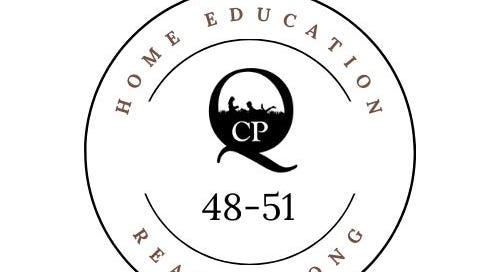III.—‘PICTURE-PAINTING’
Method of.—So exceedingly delightful is this faculty of taking mental photographs, exact images, of the ‘beauties of Nature’ we go about the world for the refreshment of seeing, that it is worth while to exercise children in another way towards this end, bearing in mind, however, that they see the near and the minute, but can only be made with an effort to look at the wide and the distant. Get the children to look well at some patch of landscape, and then to shut their eyes and call up the picture before them; if any bit of it is blurred, they had better look again. When they have a perfect image before their eyes, let them say what they see. Thus: ‘I see a pond; it is shallow on this side, but deep on the other; trees come to the water’s edge on that side, and you can see their green leaves and branches so plainly in the water that you would think there was a wood underneath. Almost touching the trees in the water is a bit of blue sky with a soft white cloud; and when you look up you see that same little cloud, but with a great deal of sky instead of a patch, because there are no trees up there. There are lovely yellow water-lilies round the far edge of the pond, and two or three of the big round leaves are turned up like sails. Near where I am standing three cows have come to drink, and one has got far into the water, nearly up to her neck,’ etc.
Strain on the Attention.—This, too, is an exercise children delight in, but, as it involves some [p 49] strain on the attention, it is fatiguing, and should only be employed now and then. It is, however, well worth while to give children the habit of getting a bit of landscape by heart in this way, because it is the effort of recalling and reproducing that is fatiguing; while the altogether pleasurable act of seeing, fully and in detail, is likely to be repeated unconsciously until it becomes a habit by the child who is required now and then to reproduce what he sees.
Seeing Fully and in Detail.—At first the children will want a little help in the art of seeing. The mother will say, ‘Look at the reflection of the trees! There might be a wood under the water. What do those standing-up leaves remind you of?’ and so on, until the children have noticed the salient points of the scene. She will even herself learn off two or three scenes, and describe them with closed eyes for the children’s amusement; and such little mimics are they, and at the same time so sympathetic, that any graceful fanciful touch which she throws into her descriptions will be reproduced with variations in theirs.
The children will delight in this game of ‘picture-painting’ all the more if the mother introduce it by describing some great picture-gallery she has seen—pictures of mountains, of moors, of stormy seas, of ploughed fields, of little children at play, of an old woman knitting,—and goes on to say, that though she does not paint her pictures on canvas and have them put in frames, she carries about with her just such a picture-gallery; for whenever she sees anything lovely or interesting, she looks at it until she has the picture in her ‘mind’s eye’; and then she carries it [p 50] away with her, her own for ever, a picture ‘on view’ just when she wants it.
A Means of After-Solace and Refreshment.—It would be difficult to overrate this habit of seeing and storing as a means of after-solace and refreshment. The busiest of us have holidays when we slip our necks out of the yoke and come face to face with Nature, to be healed and blessed by—
“The breathing balm,
The silence and the calm
Of mute, insensate things.”
This immediate refreshment is open to everybody according to his measure; but it is a mistake to suppose that everybody is able to carry away a refreshing image of that which gives him delight. Only a few can say with Wordsworth, of scenes they have visited—
“Though absent long,
These forms of beauty have not been to me
As is a landscape to a blind man’s eye;
But oft, in lonely rooms, and ’mid the din
Of towns and cities, I have owed to them,
In hours of weariness, sensations sweet,
Felt in the blood, and felt along the heart;
And passing even into my purer mind,
With tranquil restoration.”
And yet this is no high poetic gift which the rest of us must be content to admire, but a common reward for taking pains in the act of seeing which parents may do a great deal to confer upon their children.
The mother must beware how she spoils the simplicity, the objective character of the child’s enjoyment, by treating his little descriptions as feats of cleverness to be repeated to his father or to visitors; she had [p 51] better make a vow to suppress herself, ‘to say nothing to nobody,’ in his presence at any rate, though the child should show himself a born poet.
Are you following along with us? Grab the reading tracker bookmark!
You will find an appendix with questions in the back of Home Education. These questions were for the students or persons preparing to become “Qualified Members” of the Parents’ National Educational Union. We put these questions on paper for you to use, if you’d like, as you ponder Mason’s writings. A new one will be available every Monday.
Thank you to the team at Charlotte Mason Poetry for making the digital text of Charlotte Mason’s volumes available for all to use.




